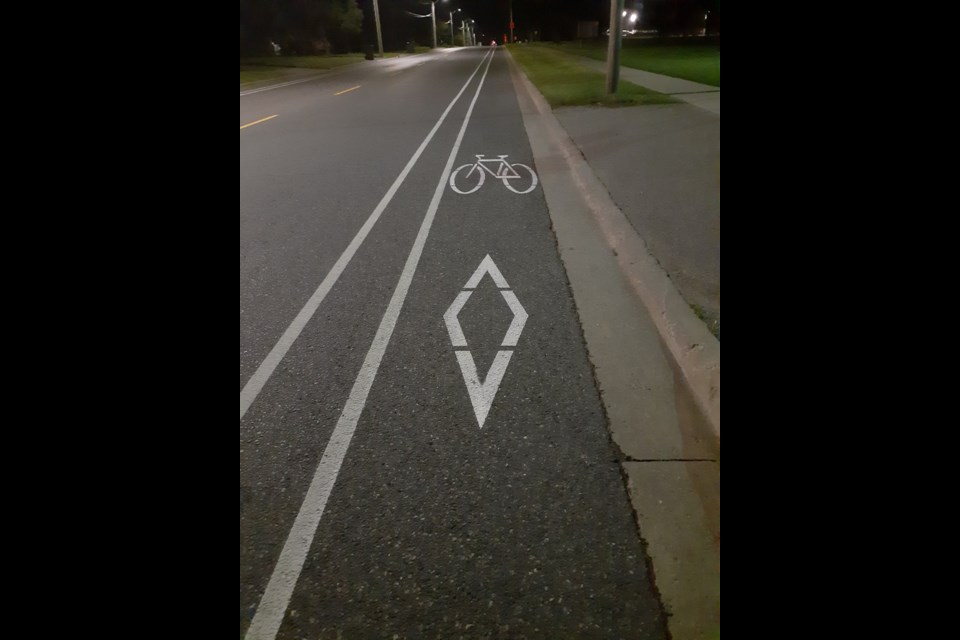This past week, residents of the area around Sault College may have noticed that roads got a new paint job delinating bike lanes. This project is part of a greater effort, pushed by the Sault Cycling Club, to make the city more friendly to alternative transportation.
The current project is painting new bike lanes in Northern Ave. and Pine St, Willow Ave. with the last two streets connecting to the Hub Trail. It is set to be completed by the end of summer.
The idea behind creating new bicycle lanes is to change the perception of cycling as a safe and convenient activity.
“What we’ve learned all over the world over the years is that the greatest way to promote cycling is through the perception of safety,” said Andre Riopel speaking to SooToday. “Whenever cities make safe and smart infrastructure, people cycle.”
Riopel is the Advocacy Director of the Sault Cycling Club. He has been involved with the Club since 1981 and used to hold the title of President.
To support a newfound feeling of safety, Riopel hopes to fill in what he calls “missing links”. This means that a cyclist should be able to get around town via bike lanes or narrow streets, without ever being subject to heavy traffic.
“When the painting project is complete, there’ll be a better sense of continuity,” he said. “Everybody should be able to jump into the system without having to mix up with heavy traffic situations.” Safety, he said, will encourage more people to ride their bikes.
“We hope — no, we don’t hope, we know we’ll see an uptick in people biking.”
City Hall has been sitting on plans to upgrade Sault Ste. Marie’s cycling infrastructure since 1995 but finally materialized them in 2017 after a grant from the Ontario Municipal Commuter Cycling Program.
The OMCCP was a part of the province’s Climate Change Action Plan during the Kathleen Wynne government to award grants to any municipal governments to build cycling infrastructure. Funding for the Action Plan came from the carbon and pollution tax, according to a press release from the Ministry of Transportation.
Sault Ste. Marie received almost $600,000.
Despite this cost, Riopel insisted that “cycling infrastructure is a small part of the pie but it’s high value.”
A much larger cost in the City budget, he claimed, is filling potholes, which are partly caused by the stress of heavy trucks.
Signage, which the Cycling Club hopes will come next, will equally foster road security.
Encouraging safety is one of two of the Club’s goals for this project.
Riopel hopes that, by narrowing Sault Ste. Marie’s streets and filling them with cyclists, drivers will be more likely to obey speed limits.
“We make roads easy to speed on in Sault Ste. Marie. But when you make the roads narrower, people drive slower.”
This idea is backed up by urban planning research. A paper in Urban Planning and Transportation Research compared and contrasted Edinburgh and Cambridge in the United Kingdom with Utretch, Rotterdam, Amsterdam and The Hague in the Netherlands.
Edinburgh and Cambridge have the highest percentage of bicycle users in Scotland and England respectively but are lacking by European standards. On the other hand, the Dutch cities are known for their strong cycling communities.
Each city was measured using five criteria: “coherence, directness, attractiveness, safety and comfort of the [cycling lane] network.” The study concludes that safe, comfortable and interconnected bike lanes encourage bicycle usage and safer driving.
Implementing such a system “requires strong government support to create priority for cyclists and to provide a safe, comfortable and attractive network.”
Using a bike for day-to-day commuting is also proven to have health benefits.
On top of health and safety, the Cycling Club also wants a strong cycling network because it will contribute to the social justice movement.
In a city where driving is the only viable method of transportation, low income people who do not own a car have a smaller radius of where they can work, send their kids to school, go grocery shopping etc. These people often overlap with socially marginalized groups.
“For marginal people, cycling is a way that nobody gets left behind.”
“Having good cycling and walking infrastructure is what makes it more equitable for everyone,” said Riopel. “It removes some of those biases.”
But how did the Sault Cycling Club gain so much influence in the municipal government?
The Club has existed since 1977 and has been building political clout ever since.
“We act like advocates, we sit on committees, we participate with the city in the planning department.”



